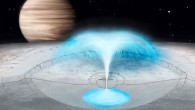Astronomers have detected two more millisecond-duration radio bursts from SGR 1935+2154, a magnetar located over 14,000 light-years away in the constellation of Vulpecula. The detection supports the hypothesis that — at least some — fast radio bursts are emitted by magnetars at cosmological distances. On May 24, 2020, four European radio telescopes detected two bright radio bursts from the SGR 1935+2154 magnetar. Image credit: Danielle...




















